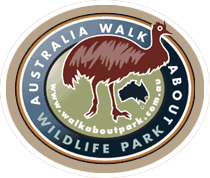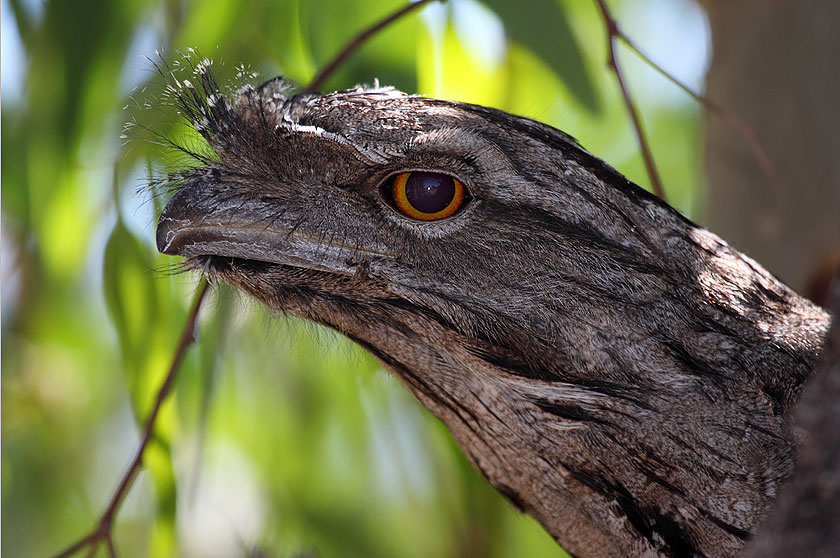Tawny Frogmouth
(Podargus strigoides)
The general plumage of the Tawny Frogmouth is silver-grey, slightly paler below, streaked and mottled with black and rufous.
A second plumage phase also occurs, with birds being russet-red. The eye is yellow in both forms, and the wide, heavy bill is olive-grey to blackish.
The body length ranges from 35 – 50 cm, with south-eastern birds being larger than birds from the north. In Australia there are three species of frogmouth. The Papuan Frogmouth, P. papuensis, is confined to the Cape York Peninsula and is larger, with an orange-red eye. The other species is the Marbled Frogmouth, P. ocellatus, which is similar in size to the Tawny Frogmouth, but is found only in the rainforests of far north Queensland and on the Queensland-New South Wales border, and it has an orange-yellow eye. Both species also occur in New Guinea.
With their nocturnal habit and owl-like appearance, Tawny Frogmouths are often confused with owls, but are actually more closely related to the nightjars. Their feet are weak however, and lack the curved talons of owls.
During the day, the Tawny Frogmouth perches on a tree branch, often low down, camouflaged as part of the tree.
Distribution and Habitat
The Tawny Frogmouth is found throughout Australia, including Tasmania. It can be seen in almost any habitat type except the denser rainforests and treeless deserts.
Food and feeding
The bulk of the Tawny Frogmouth’s diet is made up of nocturnal insects, worms, slugs and snails. Small mammals, reptiles, frogs and birds are also eaten. Most food is obtained by pouncing to the ground from a tree or other elevated perch. Some prey items, such as moths, are caught in flight, which has led to many unfortunate instances of birds being hit by cars while chasing insects illuminated in the beam of the headlights.
Breeding
Tawny Frogmouths breed mainly from August to December, although birds in more arid areas may breed in response to heavy rains. Both sexes incubate the two or three eggs. The male sits during the day, but both sexes share sitting at night. The nest is a loose platform of sticks, which is usually placed on a horizontal forked tree branch. Normally only one brood is raised in a season, but birds from the south may have two.

